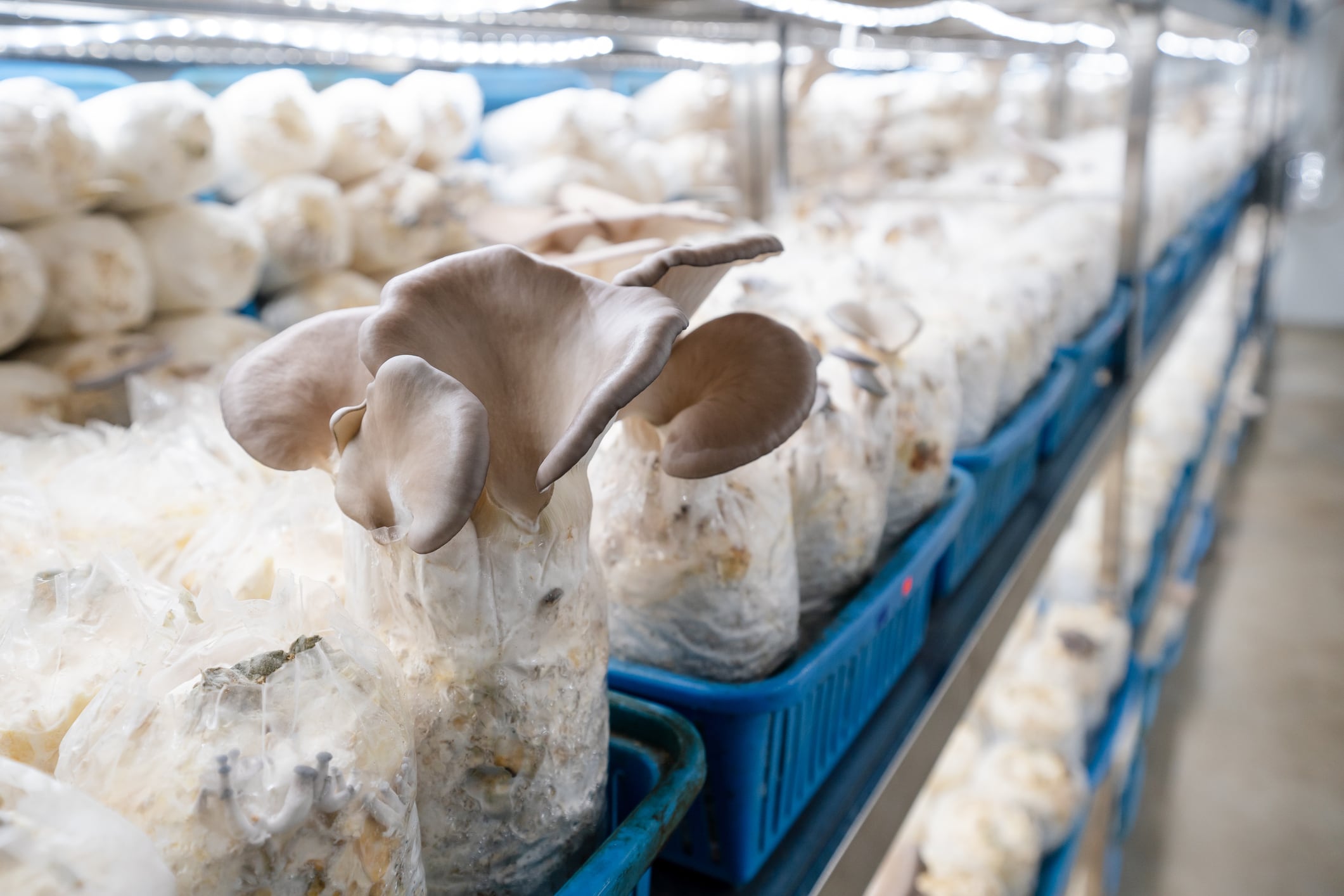As interest in fungi-based products grows across the CPG space, researchers from Australian-based nutrition and research firm Foodiq Global are pushing the boundaries of what mushrooms can do nutritionally and agriculturally.
The company attempted to grow oyster mushrooms in space for the first time on the Fram2 mission aboard the SpaceX Falcon 9 rocket, which launched on April 1, according to Foodiq Global’s Nutritionist Flavia Fayet-Moore.
The mushrooms were supplied by biotechnology firm Life Cykel, which specializes in sustainable fungi cultivation
Named “Mission MushVroom,” the experiment monitored how mushrooms grow in highly contained environments as a durable and nutrient-dense food source for extensive space missions.
According to Fayet-Moore, mushrooms are climate-resilient, highly adaptable and suited for precision farming.
“Oyster mushrooms can grow from used cotton T-shirts, as well as the inedible plant waste,” Fayet-Moore said.
They also thrive in high-carbon dioxide environments, like the International Space Station, and require minimal water and space to flourish.
“They are not like plants. They do not need sunlight to photosynthesize – they are decomposers. They are really good at breaking down carbon-containing things,” she said.
Mushrooms’ environmental adaptability makes them ideal for a closed-loop agricultural system in space, where controlled environments are necessary, she explained.
“Space farming is controlled agriculture,” said Fayet-Moore. “We have got to control all the temperature, the humidity, the oxygen, the carbon dioxide – and mushrooms, like us, need oxygen to grow, and they expel carbon dioxide.”
Reaching net zero: A roadmap to reduce emissions and increase nutrition security through strategic sourcing, manufacturing and packaging
This story is part of a special collection of articles examining how consumers, brands and reglators are thinking about climate action, including what is and isn't working in the quest to reduce Scope 3 emissions and improve environmental sustainability. The collection also explores how the food industry is balancing the health of people and the planet through ingredient innovation, modern manufacturing and sustainable packaging.
Check out the full collection.
To receive future special editions via email, register for free for FoodNavigator-USA's newsletters. Find out more by clicking the yellow 'register' button at the top of our homepage or by visiting https://www.foodnavigator-usa.com/Info/Why-register/
Duckweed lentils serve as a potential nutrient-dense food option in space
Space farming continues to be an area of interest across the food industry to showcase controlled, sustainable cultivation methods in zero gravity. In 2023, Israeli startup Green Onyx launched indoor-grown freshwater lentils, Wanna Greens, to the International Space Station (ISS) aboard SpaceX.
Freshwater lentils, which are native to Southeast Asia, growin low maintenance conditions with minimal amounts of light, water and fertilizer, with a high yield due to their ability to duplicate every several days to produce one to two kilos in a five square meter space, per Green Onyx.
A circular food system in orbit – and on Earth
The potential for mushrooms to support a circular economy shows promise as a regenerative, sustainable crop beyond nearby space (e.g. the International Space Station) but possibly further away on other planets, like Mars, Fayet-Moore said.
“Not only can they help close that loop in plant agriculture … but when we are done growing mushrooms, that substrate is used to grow more plants,” said Fayet-Moore. “It creates a circular economy.”
For example, mushroom compost – already a common byproduct in terrestrial farming – can take agricultural and even textile waste and turn it into something new, she said.
A potentially viable source of vitamin D
Beyond sustainability, mushrooms’ nutritional profile and its ability to generate vitamin D when exposed to UV light are significant health benefits, Fayet-Moore said.
UV-exposed mushrooms can produce – in 100 grams of mushroom – 1,000 international units of vitamin D necessary for bone health, she said. According to data from the Mayo Clinic, adults from 1 to 70 years are recommended a daily amount of 600 IU, and people older than 70 years should take 800 IU – although most adults in the US consume significantly less than the recommended amount, per National Institute of Health data.
“They have a very, very rich nutrient profile because they are not plants – they are fungi,” Fayet-Moore said, emphasizing mushrooms’ wide array of nutrients typically found in vegetables, grains, nuts, seeds and meat.
“You have that typical folate and potassium that you find in plants,” she said. “But then you have a quarter of daily intake of riboflavin, biotin, niacin, pantothenic acid, copper, selenium and chromium.”




